by Rob Reilly
I’ve been the owner of a Jaguar Mark V saloon since 1969, my daily driver for three years, then a low-budget restoration in the 1970s. It is now nearing the end of a full body-off—its second restoration. Also in the stable are an XK120 FHC, which I restored in the 1980s and have put 11,000 miles on since, and an XJ12L, which was my daily driver for ten years. But my latest Jaguar is most unusual, much more of an intellectual challenge, and I hope an interesting story.
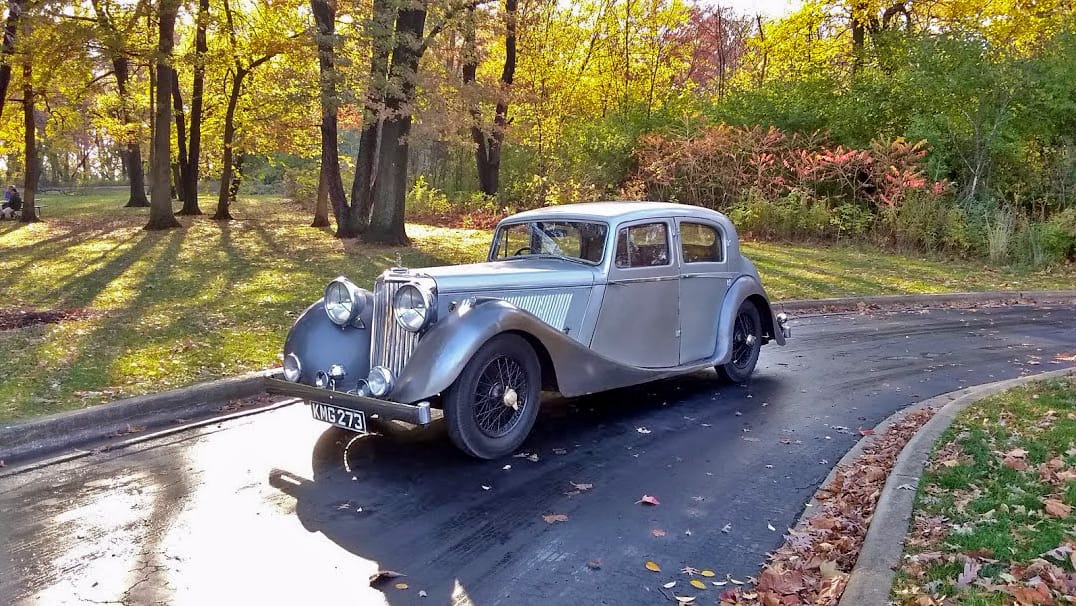

Some readers may not know that Jaguar began in 1922 as Swallow Sidecar Co.—just two guys named William Walmsley and William Lyons in a Blackpool garage, building sidecars for motorcycles. The business grew fast and in 1926 it became Swallow Coachbuilding, making special bodies for other people’s chassis, mostly Austin, Standard and Wolseley. Then in 1931 they changed the name to SS Cars Ltd., building their own cars called SS-I and SS-II with parts brought in from Standard. And in 1935 they introduced a new saloon which they named the Jaguar. This was the car that launched little SS into the realm of the major players. The company name changed from SS Cars to Jaguar Cars in 1945.
In 2018, I found a 1938 SS Jaguar saloon on the internet that looked sad and neglected, like it needed me, and nobody else could save it. I bought it and had it delivered by truck. It had 96,000 miles but was last registered in 1998 and looked like it hadn’t run in those 20 years. My friends on the jag-lovers.org pre-xk forum were a tremendous help in giving me advice and downloads of the parts and service books, and clues of where to find parts, or how to make them. More than a few parts came from Moss. My wife Jeanine loved it, and decided it should be restored in green, her favorite color. She even gave me a brass bunny rabbit out of her collection for a radiator ornament. Mountain Ash Green is on the 1938 color chart, a medium green.
Three weeks after the SS arrived home, my wife suddenly developed a brain disorder called Lewy Body Dementia, which is a deterioration of the neurons in the brain, and it meant the psychiatric ward at the hospital and then a memory care nursing home. At the diagnosis, the doctors gave me one hour to decide the path of Jeanine’s future. That was a terrible blow. All our retirement plans were out the window. Insanity is nothing like it is portrayed on TV by actors, especially comedians. There is nothing funny about it at all. Picture a teacher who taught hundreds of little kids to read and write, and now she couldn’t even write her name. A month after she was in the nursing home, she asked me if the car was painted green yet. She meant the SS; she hadn’t forgotten it.
The SS turned out to be good therapy for me in those dark days. The boot lid had no hinges. The rear bumper was off, the brackets were broken and needed welding, and the rear spring shackle mounts were broken. I fixed them and made hinges with advice from internet friends. Moss catalogs came in handy; the engine mounts, side stabilizer and trans mounts are the same as early XK120s; the SU fuel pump and carbs take the same parts as an MGTC, and of course there are Lucas bullet electrical connectors and BSF bolts and nuts.
A few months later I had it running and backed it down the driveway. Hmm, the brakes are not very good. It’s a mechanical system with rods, links, and bell cranks, no hydraulics. While investigating, I discovered somebody had assembled the linkage all wrong. I had to rework most of it, and that’s all there was to it. Now the brakes work very well.
Soon it was running, all lights and horns working, and I was able to drive it to the nursing home, where Jeanine could see it from the window. It wasn’t green, but she was happy to see it. She lasted two and a half years and then she was gone, received into heaven, but it’s only a temporary separation. I will do the SS in Mountain Ash Green when I finish the Mark V. The bunny rabbit will stay.
The 1936-37 SS Jaguars, like all the previous models, had been coachbuilt, i.e. steel panels nailed onto a wood framework, which is very slow on the production line. I learned from one of my Jaguar history books that William Lyons wanted to increase production and lower costs, so for the 1938 model year he decided to go with all-steel construction. By 1937 the side-mounted spare tire was out of style, so Lyons decided it should go in the back, under the fuel tank. He and his panel beaters built a full-scale mock-up, took it apart, and sent the pieces out to various panel fabricators to be copied and mass produced, without any blueprint drawings. Meanwhile SS Cars ditched the coachbuilding equipment and got ready to make all-steel cars. The production panels came in, and they wouldn’t fit together right. Pieces had to be sent back or reworked, and the first batch of 25 bodies had to be scrapped. No cars went out the door for about four months, and the company very nearly went bankrupt.
My car is part of the second batch of bodies, completed January 3, 1938, and as such, there are many strange little things about it. The engineers didn’t really have things all worked out yet in the engineering office and on the production floor. The inner panels of the front doors have a vertical weld seam spanning a hole; the panel was too wide, so they sliced away ¼-inch through the hole, and welded the two halves together. The rear cross member of the chassis frame is made up of about 20 little pieces because it has to dip down to clear the spare tire, where cars made six months later have a large press-formed piece. The fuel tank supports are all too short, and there were wood blocks in there to raise the tank. The fuel tank clamps were too short, and there are extensions welded on, and extra holes in the extensions because they still didn’t get them right the second time. The fuel tank itself is made of about 25 pieces, as if it was the very last part to be designed. The spare tire support has an extension welded on, apparently because they didn’t get that right the first time. The bumper interfered with getting the spare in and out, so it is mounted on hinge pins, and you have to undo a couple of wing nuts and swing the bumper down to get at the spare. But be sure to do it before you put the jack in the socket, because the bumper interferes with that as well. It’s a very unique car, indeed.
Speaking of the spare tire, there is a funny story. Mr. Lyons took one of these cars on his family vacation in France, and he had a flat tire. Apparently, he had so much trouble with all that bumper business, that when he got back to the office, the first thing he said to his chief engineer was, “Change that.” It was changed.
The SS gearbox is a double helical type with herringbone gears. It was noisy and needed new needle bearings and a counter shaft, so I rebuilt it using Moss parts for an XK120. While the engine was out, I painted it gray, which I believe is the correct color for ’38 engines. Some previous owner had gone goofy with a brush and painted it pastel yellow and two shades of pastel green with red fan blades. The clown car motor made it embarrassing to open the bonnet. The gearbox, brake linkage parts, front and rear axles also were yellow, and the radiator green. All have been returned to black.
I’ve driven the SS to a couple of British car shows, where it got a lot of attention. There are only about 20 left in the world. People are amazed at the tool kit in the boot lid and the size of the head lamps. Also, I’ve gone to some local cruise nights where it’s mostly street rods and rarely any British cars at all. I get comments like, “Wadoncha drop a smawl blawck Chebby in thurr?”
It has been nice to take it on country drives around northern Illinois. Being RHD in a right side driving country, with trafficators and no outside mirrors, it takes a little getting used to in suburban Chicagoland traffic, but the confidence is coming. Changing lanes is the most difficult trick. I don’t know what people must think seeing that trafficator flipping out. Jaguar first offered LHD in the 1948 saloons but the clutch linkage left something to be desired. The 1949 Mark V saloon was the first model to be designed specifically to be built in both LHD and RHD.
Will I take it further, like on the Interstates? I have not yet taken it over 60 miles per hour, but I feel it could keep up with the slower traffic. Hmm, maybe next summer. There’s a show in Michigan I’ve been meaning to go to. MM




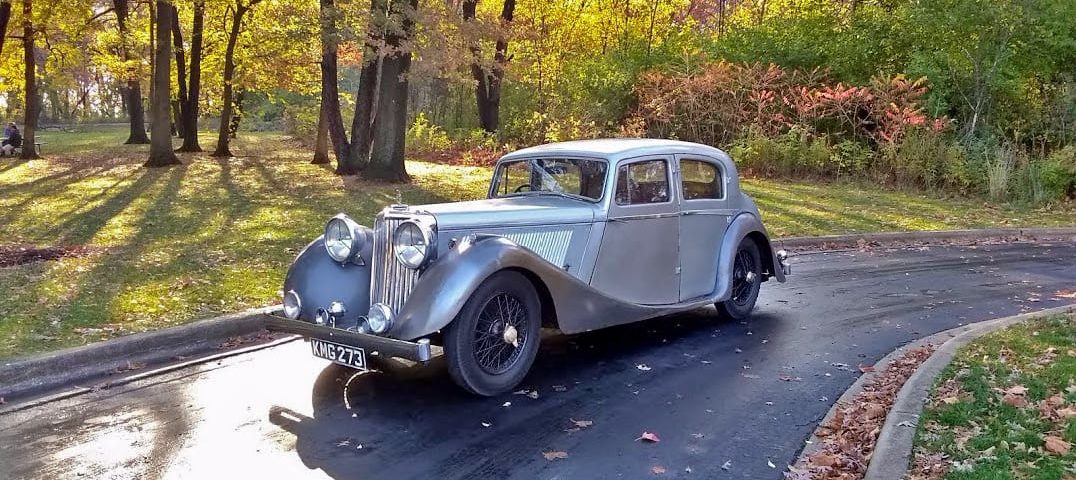

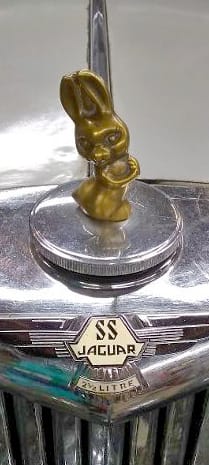
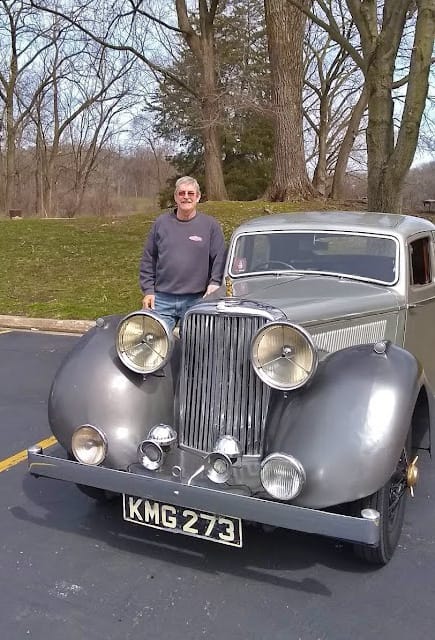
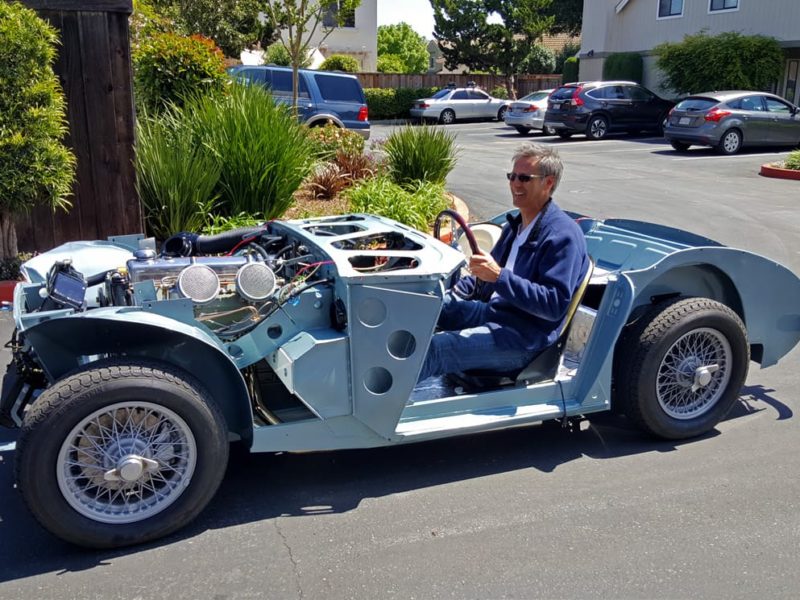
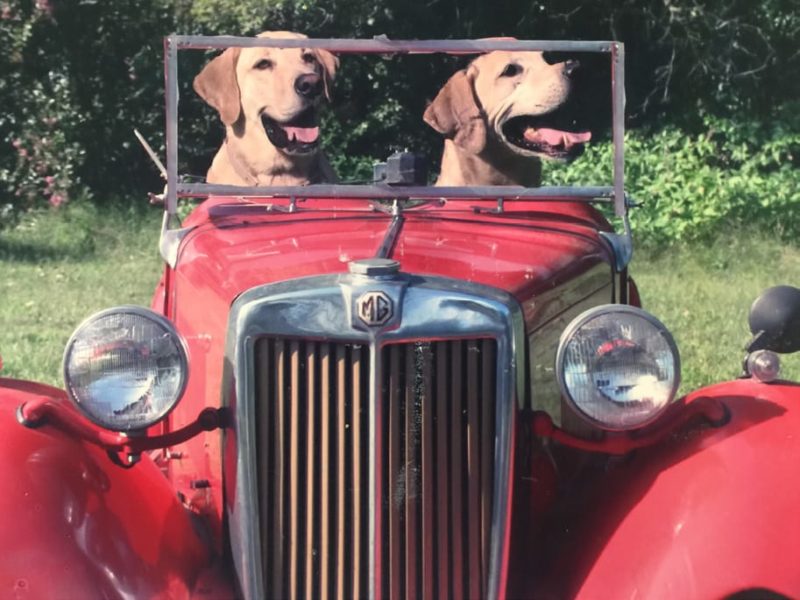
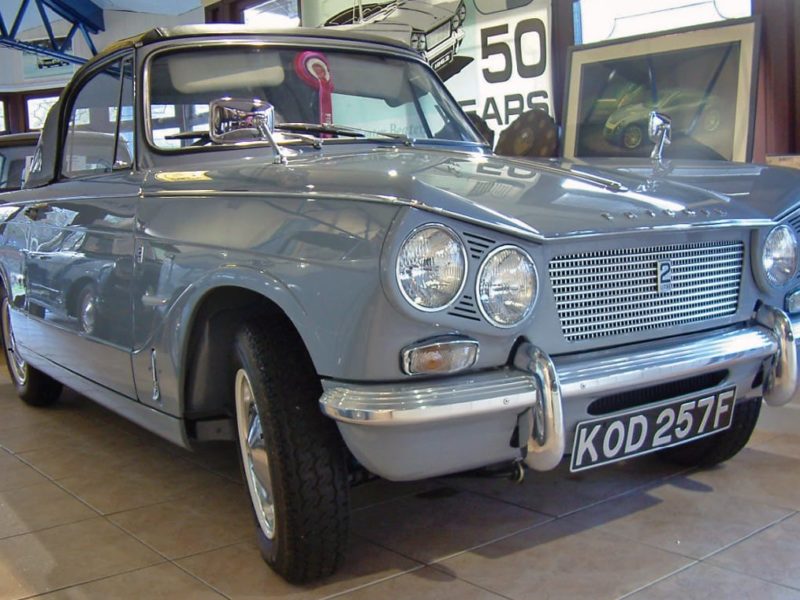
'A More Unusual British Car' has no comments
Be the first to comment this post!